Case studies
Cultural art installations on Adelaide Metro buses
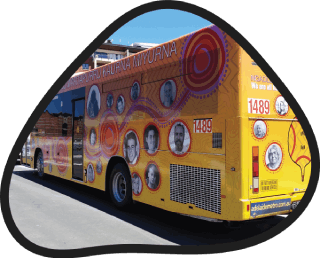
Since 2010, we have been running the Kardi Munaintya, or Emu Dreaming, tram wrap to coincide with National Reconciliation and NAIDOC weeks in recognition and celebration of living Kaurna culture and the 39 main Aboriginal language groups of South Australia.
In more recent years, we have expanded the living artwork program to include super graphics on the O-Bahn and City Connector buses. Also designed by Paul Herzich, a local Aboriginal landscape architect, visual artist and former departmental employee, these buses raise awareness of Kaurna people in the public realm and celebrate the diversity of Kaurna people and language on Country.
The O-Bahn bus design, Ngadlu Wartapurru Kaurna Miyurna, or we are all Kaurna people, features the four main stops along the O-Bahn corridor connected by meandering journey lines and reflects the Kaurna landscape from the hills, across the plains and to the sand dunes along the coast.
The City Connector bus features a generalised map of the city of Adelaide and tells a story of the local landscape pre- and post-colonisation, as seen through a Kaurna person’s lens.
Aboriginal community-led naming of infrastructure
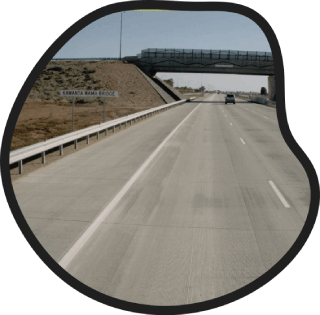
Dual naming of significant state sites is an important way in which our department pays respect to Aboriginal cultures, languages and heritage.
Our conventions around dual naming are now business-as-usual, with several recent high-profile infrastructure projects, such as the Northern Connector and Darlington Upgrade including Aboriginal community-led single naming. On projects such as these, we ask Aboriginal Nations to take ownership of the process by nominating names that are most important to their communities. The nominated names are then approved and registered on the National Gazetteer Register of Official Place Names—becoming part of the nation’s official mapping and appearing in our day-to-day lives on navigation sites like Google Maps.
The naming of infrastructure sites by Aboriginal communities not only promotes the recognition and education of Aboriginal languages and placenames, but also pays respect to the names of Aboriginal community leaders who have made positive impacts in our history and community.
Supporting the Buthera Agreement and the community of Wardang Island/Waraldi
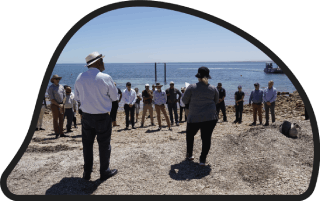
We played a key role assisting the Narungga Nation to negotiate for the inclusion of a project to build a boat landing facility on Wardang Island/Waraldi in the Buthera Agreement between the Narungga Nation Aboriginal corporation and the State of South Australia. The previous landing facility was demolished by the state government in 2007 due to its derelict and unsafe condition. Since then, the only way to access the island has been by beach landing which presents safety and practical challenges for boat users.
It is anticipated that once complete, the new landing facility will bring tourism back to Wardang Island/Waraldi and with it economic development for the Narungga community who will operate the facility. This will benefit both the Narungga community and the wider public who will be able to participate in more economic, recreational and cultural opportunities on the island.
We will continue to play a key role in the boat landing facility project, managing contracts, assets, and quality assurance for the project.
Telling Aboriginal history through personal stories and artwork
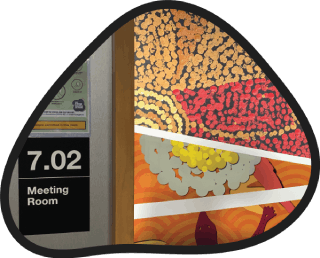
An initiative of our previous Stretch RAP was to rename 31 meeting rooms over four floors of the Flinders Street office with names of past and present Aboriginal Community Elders and leaders. These Aboriginal leaders were selected from across the different regions in the state and were chosen for their achievements as well as the positive impacts that they have had on their communities.
Along with renaming the meeting rooms, each room has been fitted out with the story of the Aboriginal leaders whose names were given and adorned with artwork that represents their totems and community/cultural landscapes. The stories and artwork were developed in consultation with the families and communities of the Aboriginal leaders, and the artwork was produced by Paul Herzich.
Once completed, the rooms were opened with an official ceremony in which the Minister, staff, Aboriginal Elders and the families of the Aboriginal leaders were invited. Many of the families were emotional and ecstatic upon first seeing their loved one’s storyboard and named meeting room. They, including several staff who have family connections to the Aboriginal leaders, felt honoured and proud that their loved ones had a place of their own.
The re-named rooms also provide all staff with the opportunity to get to know Aboriginal people and history, told through the lens of Aboriginal people themselves. Each time a staff member books a room for a meeting, they are immersing themselves, their colleagues and their stakeholders in the stories, cultures and achievements of Aboriginal people in South Australia.
Embedding Reconciliation in Field Services

The Reconciliation Action Plan (RAP) is an important cultural and strategic driver in our department's Field Services team, who manage road maintenance across the state. Field Services is staffed by a diverse range of employees spread across several regional locations, with 11% of employees identifying as Aboriginal and Torres Strait Islander people.
“With such a broad workforce from different backgrounds and worldviews, it’s important that we educate our staff about the RAP and embed this into our organisational culture, as it drives better outcomes and productivity across the business,” said Mark Elms, Manager of Field Services. An essential part of this process is elevating the voices of local community, Elders and Aboriginal and Torres Strait Islander employees in our planning processes and engaging our senior leadership team into the conversation.
Through quarterly workshops, staff with different backgrounds take a collaborative approach to embedding RAP actions, planning unique Field Services-related events, cultural training, cultural support services and community engagement initiatives.
Four-step Aboriginal Cultural Footprint training
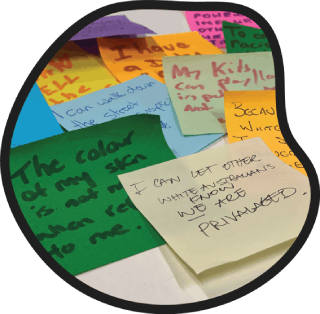
Since 2016, our department has been delivering a four-step Aboriginal Cultural Footprint training program. The program is a key deliverable within our Reconciliation Action Plan (RAP). The program outline is attached, although it broadly includes:
- Step 1: Interactive Ochre
- Step 2: Impact Program
- Step 3: Cultural Awareness and Sensitivity Program
- Step 4: Cultural Respect and Safety.
To better understand the program’s outcomes and its efficacy, the following were reviewed:
- processes to deliver the program
- completion status of each of the steps
- common themes from participant feedback
- opportunities to maximise participation rates.
Each step of the program has a different delivery method, provider and target audience.
Supporting Aboriginal employment, businesses and culture through the Northern Connector project
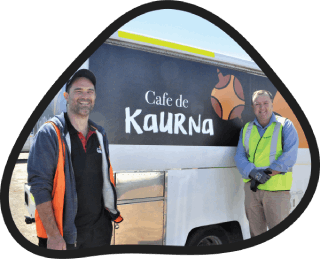
The Northern Connector project commenced construction through the awarded contractor, Lendlease, in late 2016. By engaging early with Kaurna Elders and community members on their expectations for the project, and then aligning these to strategic contract requirements, we were the able to influence the outcomes of the project in ways that had profound impacts on the Aboriginal community before the project had even started.
Over the life of the project, the Northern Connector became a hive of economic activity, with a strong focus on upskilling Aboriginal people through entry-level jobs and growing capacity for existing Aboriginal businesses such as RAW, who have now developed a civil construction capability.
An average of 11–13% of Aboriginal people worked on the project overall, with many finding ongoing employment beyond the project with subcontractors in the civil construction field.
The project also became a hive of cultural activity and learning, with the on-site cultural hub, gallery and eatery, Café De Kaurna, becoming a gathering place for Elders and many in the community during construction. The relationships built with the Kaurna community allowed for swift, sensitive and respectful action when excavation works revealed burial sites.
The Kaurna community, the department and Northern Connector contractors workshopped a repatriation process together, which resulted in a Kaurna-led camp-out and repatriation ceremony.
Construction of the Northern Connector project is now complete, with infrastructure named with Aboriginal names and signs erected to acknowledge the repatriation ceremony. This symbolises a long-lasting legacy of the learning and achievements that took place through the project, as well as respect and recognition of the Kaurna land on which it sits.